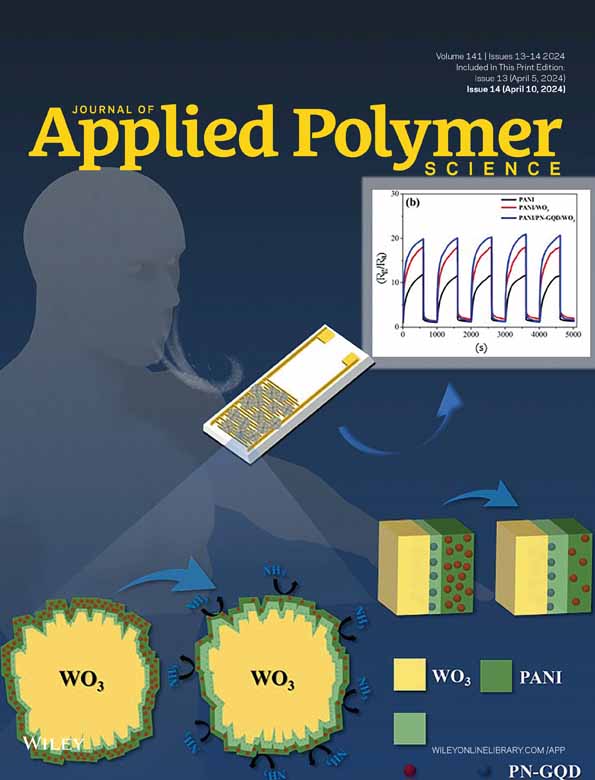Water-based UV curable hybrid urethane-acrylates formed by acid–base interaction between tertiary amine containing polyurethane and acrylic acid for photocoating and ink applications
Abstract
Urethane acrylate hybrids are commonly used in polyurethane dispersions (PUD). PUDs are key ingredients in UV curing applications and UV curing is widely used in coatings and inks. The preparation of PUDs involves many volatiles in the form of solvents and reagents that are also carried over in the UV curing step. This article reports a process, which totally eliminates these volatile components and additionally introduces many flexibilities. The process involves acid–base interaction between tertiary amine containing polyurethane and acidic vinyl monomer like acrylic acid forming polyurethane-acrylate (PU-AA) hybrids in water. The developed process also overcomes the prepolymer and “endcapping” approaches used in the preparation of PUDs that restrict the molecular weight of polyurethanes. Simultaneously, because of the prevalence of large number of vinyl components in the polymer backbone through the acid–base interaction, it functions as a multifunctional acrylate similar to the reactive diluents used in UV curing applications. Thus, it helps to increase the cross-linking density of the UV cured substrates. In general, high crosslinking density helps to improve characteristics like hardness, scratch, solvent and stain resistance of coated substrates. The process has been demonstrated to form transparent and opaque coated substrates and cured inks. This development potentially helps to shift the process from an industrial activity to do-it-yourself domain and has implications for the development of components for 3D printing sustainably.
CONFLICT OF INTEREST STATEMENT
There are no conflicts to declare.
Open Research
DATA AVAILABILITY STATEMENT
The data that supports the findings of this study are available both in the main article and in the supplementary material of this article.




